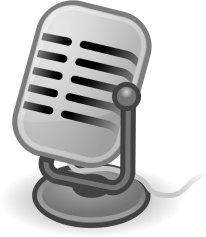In this blog, JD Carpentieri, Lecturer in Adult Education at the Institute of Education, National Research and Development Centre (NRDC), shares his reflections on the programme’s third webinar ‘How to critically analyse and present data’.
I hope everyone enjoyed this session. From my own perspective, two aspects of the experience leap out.
First, speaking for so long, without verbal and visual interaction with learners, is a genuinely odd experience. The inability to pick up on cues from the listeners/learners (beyond text chat) means it is essential to have a great deal of confidence in one’s teaching materials. This may offer a lesson for anyone who thinks they might do online lecturing themselves in the future: it will probably help to be able to draw on lectures/materials that have been tried and tested in a face-to-face classroom environment.
Second, we really did pack a broad range of material and issues into this session – and I hope the learners did not feel that I was rushing through it all. Collecting data is a challenging (but extremely interesting) process for even the most experienced researchers. I learn something new about data collection on every research project I embark on. Data analysis presents its own range of challenges. And in every project I make new mistakes – but hopefully I learn from those mistakes. With hindsight, there is always a different question you wish you had asked, or a research article you wish you had read before designing your topic guide. But that is life, and all we can do is our best in the here and now.
With regard to some of the specific issues I discussed, if anyone is interested in thinking more deeply about how numbers are used in shaping policy, and how they could be used better, I would highly recommend the writings of Ben Goldacre. I am primarily a qualitative researcher myself, but have been strongly influenced by quantitative methods. Goldacre writes about the numbers that shape our lives in an amazingly easy to read, often humorous manner – and it was his writing that first got me interested in querying the numbers around me, rather than accepting them as objective fact. He has written extensively for The Guardian in the past, and has produced a couple of very entertaining books.
There is one final suggestion I would like to make: write as much as possible (even if that’s not a lot) during the research process. Don’t save all the writing for the end of the project. If you can write little but often throughout the literature reading and data collection phases, you will find later on that much of your work is already done. You will also find that “writing along the way” stimulates your thinking. This can be incredibly helpful when you come to the end of an occasionally hurried research project, and are desperate to produce lots of coherent text in a short period of time. If the ideas have already been percolating in your head for a while and have already been put down on paper (even just in note form), you will have a much clearer vision of what to do with your data, and how to do it. Good luck to everyone!

